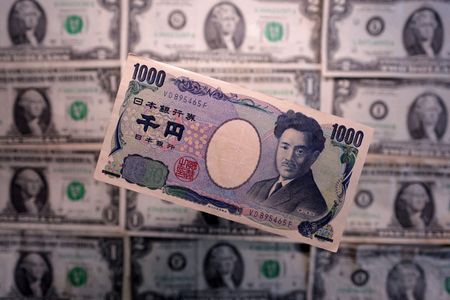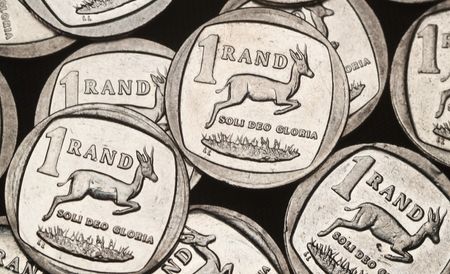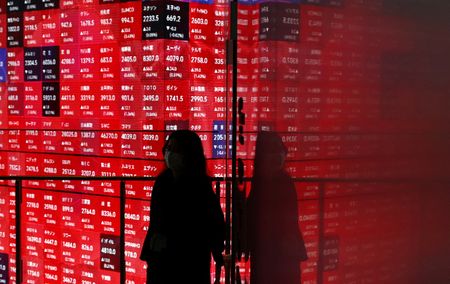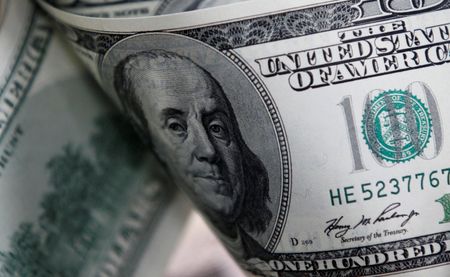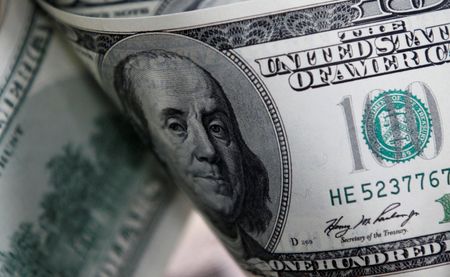By Gertrude Chavez-Dreyfuss
NEW YORK (Reuters) – The U.S. dollar continued to bounce back on Thursday on some technical buying after being oversold last month, with investors more optimistic about tariff deals between the United States and its trading partners.
Volume was thinner than usual, as many international markets were closed on Thursday for the May Day holiday.
The yen, meanwhile, sank as the Bank of Japan lowered growth forecasts due to U.S. tariffs and left interest rates on hold. It dropped to a four-week low against the dollar, which rose 1.7% to 145.52 yen, on track for the greenback’s largest daily gain since November 2024.
Against the euro, the yen fell to a four-month low, with the single currency last up 1.4% at 164.29 yen. The euro was on pace for its largest daily rise versus the yen in two months.
The BOJ’s decision to hold rates was unanimous and expected, but the downgraded outlook reduced the chances of future hikes. It now expects underlying inflation to reach its 2% target in the latter half of fiscal 2026 and onward, pushing back the timing by a year from its previous projection in January.
The dollar, on the other hand, rose across a broad swathe of currencies, as investors weighed the prospects of trade deals with U.S. partners.
Treasury Secretary Scott Bessent and White House economic adviser Kevin Hassett expressed hope on Thursday for progress in easing trade tensions. Hassett told CNBC that there have been “loose discussions all over both governments” about the tariffs and China’s easing of duties on some U.S. goods last week was a sign of progress.
President Donald Trump had said on Wednesday that “potential” trade deals with India, South Korea, and Japan are coming, with a very good chance of reaching an agreement with China as well.
“The Trump administration has come to the realization that they might have overplayed their hand when it comes to tariffs and they’re trying to paint a picture of the potential for negotiations,” said Jayati Bharadwaj, global FX strategist at TD Securities in New York.
A social media account affiliated with Chinese state media said on Thursday the United States has approached China seeking talks over Trump’s 145% tariffs, which potentially signals Beijing’s openness to negotiations.
In afternoon trading, the euro fell to a three-week trough versus the greenback and was last down 0.4% at $1.1286. Sterling also fell 0.4% to $1.3284.
Against the Swiss franc, the dollar climbed 0.6% to 0.8311 franc.
“It looks like the de-dollarization of the last month has calmed down,” said Erik Bregar, director, FX & precious metals risk management, at Silver Gold Bull in Toronto. “Overall, the dollar is following moves in Treasuries. When the bonds sell-off paused, the dollar started gaining as well.”
NONFARM PAYROLLS, OTHER US DATA
Market participants are now looking to Friday’s U.S. nonfarm payrolls (NFP) report for an indication on when the Federal Reserve will resume cutting rates. Wall Street economists are forecasting 130,000 new jobs created last month, compared with a print of 228,000 seen in March.
“Since the NFP survey was conducted several weeks ago, it’s likely to show only a slowdown in hiring and relatively few outright layoffs as businesses broadly froze current employment levels until there was more certainty around the levels and duration of the ‘Liberation Day’ tariffs,” wrote Matthew Weller, global head of research, at FOREX.com and City Index, in emailed comments.
Thursday’s data, however, showed continuing weakness.
U.S. initial jobless claims in the latest week surged to a two-month high. Initial claims for unemployment benefits jumped 18,000 to 241,000 for the week ended April 26, the highest since February.
A separate report showed U.S. manufacturing contracted further in April, while tariffs on imported goods strained supply chains, lifting prices paid for inputs and keeping the narrative on stagflation alive and well.
The Institute for Supply Management’s (ISM) manufacturing PMI dropped to a five-month low of 48.7, which was slightly higher than expected, compared with a reading of 49.0 in March. A PMI reading below 50 indicates contraction. Economists polled by Reuters had forecast the PMI declining to 48.
In other currencies, the Australian dollar dipped against the U.S. dollar after a bumper April that saw it notch multi-month peaks. The Aussie was last down 0.3% at US$0.6385, having recently found support from a slightly hotter-than-expected inflation reading.
Currency
bid
prices at
1 May
07:43
p.m. GMT
Descripti RIC Last U.S. Pct YTD Pct High Low
on Close Change Bid Bid
Previous
Session
Dollar 100.19 99.672 0.53% -7.65% 100.37 99.6
index 11
Euro/Doll 1.1287 1.1329 -0.35% 9.04% $1.1341 $1.1
ar 266
Dollar/Ye 145.59 143.02 1.84% -7.44% 145.725 142.
n 94
Euro/Yen 164.36 161.97 1.48% 0.7% 164.45 161.
82
Dollar/Sw 0.8298 0.8266 0.41% -8.55% 0.8333 0.82
iss 57
Sterling/ 1.3281 1.3335 -0.42% 6.17% $1.3345 $1.3
Dollar 261
Dollar/Ca 1.3836 1.3798 0.28% -3.78% 1.3862 1.37
nadian 85
Aussie/Do 0.6386 0.6403 -0.23% 3.24% $0.6428 $0.6
llar 368
Euro/Swis 0.9367 0.9356 0.12% -0.28% 0.9395 0.93
s 45
Euro/Ster 0.8499 0.8498 0.01% 2.73% 0.851 0.84
ling 81
NZ 0.5909 0.5937 -0.44% 5.64% $0.5951 0.58
Dollar/Do 94
llar
Dollar/No 10.4329 10.3884 0.43% -8.21% 10.4678 10.3
rway 918
Euro/Norw 11.7782 11.7701 0.07% 0.08% 11.819 11.7
ay 723
Dollar/Sw 9.7482 9.6567 0.95% -11.52% 9.7819 9.65
eden 56
Euro/Swed 11.0048 10.942 0.58% -4.03% 11.0235 10.9
en 309
(This May 1 story has been corrected to fix the month in comparative nonfarm payrolls data to March from February, in paragraph 14)
(Reporting by Gertrude Chavez-Dreyfuss; Additional reporting by Samuel Indyk in London and Tom Westbrook in Singapore; Editing by Mark Heinrich and Gareth Jones, Kirsten Donovan and Diane Craft)

